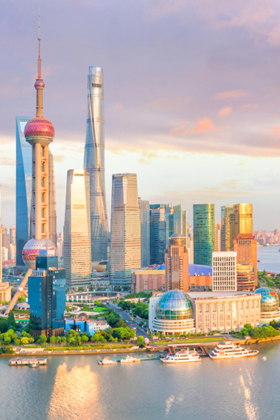Guangzhou Development District
Overview of Huangpu district / Guangzhou Development District
- eng.gdd.gov.cn |
- Updated: Jan 07, 2022
Situated in the east part of Guangzhou, Huangpu district / Guangzhou Development District is at the center of the golden delta comprised of Guangzhou, Hong Kong, and Macao. Huangpu district ranked fourth in comprehensive competitiveness among 889 municipal districts in China in 2019, according to a report recently released by CCID Consulting Group, a scientific research institution directly attached to the Ministry of Industry and Information Technology.
Economic growth
In the first 10 months of 2019, Huangpu has maintained steady economic growth, achieving an output value of industries above designated size of 642.86 billion yuan and a fixed-asset investment of 108.12 billion yuan. Huangpu has invested in a total of 148 major projects at the municipal level, of which the overall investment reached 48 billion yuan by the end of October.
Platform growth
Guangzhou Knowledge City, spanning 123 sq km with a developable area of 60 sq. km, is a Sino-Singapore demonstration project. Sino-Singapore Guangzhou Knowledge City (SSGKC) focuses on a knowledge-intensive economy and emerging sectors including a new generation of information technology, high-end equipment manufacturing, low-carbon economy, biomedicine, digital economy, new materials, and marine economy, building innovation parks which value new information technology, artificial intelligence, biomedicine, new energy and new materials. It also sees the Guangdong-Hong Kong-Macao Greater Bay Area as an integrated incubator for ciTech innovation, as it seeks to build new dominance in intellectual property rights protection for the Guangdong-Hong Kong-Macao Greater Bay Area and to realize a "Silicon Valley life".
Huangpu Lingang Economic Zone, with 42 sq km, including 15 square kilometers of water area, intends to grow modern service industries such as a headquarters economy, shipping services, technology finances, and cultural creativity. With the geographical advantage of the golden delta and overall planning of the area along the Yangtze River to international standards, the zone strengthens the coastline port and enterprise transformation and upgrading, and helps transform urban landscape into a modern metropolis in a new era of global innovation for port cities,.
Guangzhou Science City (GSC) is the core of the Guangzhou Hi-Tech Industrial Development Zone, with an area of 37.47 square kilometers. It is targeted at building a scientific road forward to a headquarters economic corridor, at highlighting the international high-end enterprises agglomeration and the ecology of innovation and entrepreneurship, and to upgrading high-tech industries, R&D institutions, and an elite workforce. Meanwhile, GSC is dedicated to building a world-class high-tech industrial park. For this reason, it easily attracts technology enterprise headquarters, R&D centers, and settlement centers among other types of resources which improve urban public services and help develop municipal supporting facilities.
Guangzhou International Biotech Island (GIBI) is the core carrier of the National Biological Industry Base of Guangzhou, covering an area of 1.83 sq. km. It aims to create globally outstanding innovation and start-ups centers for world biomedicine, with a focus on improving the city's urban design and construction standards, the public technology service platform, and the national laboratory for regenerative medicine and health. It introduces global biomedical R&D institutions and headquarters, build a global biomedical R&D and industrial innovation space, and will be the permanent home of the Guanzhou International Bio Forum and a biomedicine version of the World Economic Forum.
Industry focus
The district has incorporated 21 national industrial bases and parks for electronic information and new materials, four strategic emerging industrial bases in Guangdong, including ones for flat panel display manufacturing and bio-industry, and six municipal-level strategically technological emerging industries bases for e-commerce and intelligent equipment. It has generated three 10 trillion yuan-level industrial clusters for electronics, automobiles and chemicals, four 50 billion yuan-level industrial clusters for new materials, foods and beverages, metal manufacturing and bio-health, while also developing six innovative industrial clusters for new information technology, intelligent devices and flat panel display, new materials, biomedicine and e-commerce. The district, dedicated to the common growth of the three leading industries of IAB, has set up a 10-billion-yuan innovation park industrial investment fund and an IAB professional incubator and accelerator cluster. For instance, it has put a lot of effort into a new generation information technology industry by introducing a production line project for LG's 8.5-Gen OLED with a total investment of 46 billion yuan. It has also welcomed the Stanford (Guangzhou) International Research Institute, put CanSemi's chip project in place, and built the Guangzhou blockchain and other industrial associations, thus ending Guangzhou's chip-deficient history. In terms of artificial intelligence, high-end projects such as the Gaoyun Semiconductor and Jingchi Unmanned Vehicle were introduced to build a number of core platforms of the industrial Internet such as Alibaba Cloud, CASI Cloud and the China Academy of Information and Communications Technology, to intensify enterprise intelligent transformation. As for biomedicine, the district includes industry leaders such as GE, BeiGene and the TSRI (Scripps Research Institute), and has cooperated with the Cold Spring Harbor Laboratory which is the birthplace of eight Nobel Prize winners. It has built a research institute and a transfer center for SciTech achievements to generate a complete industrial ecological chain of industry, university and research.
Policies and regulations
Seizing each growth opportunity, the district has been strengthening its policy integration and innovation and number of institutions. In February 2017, it launched Four 10-Article Golden Policies centered on advanced manufacturing, the modern service industry, headquarters economy and high-tech industries. In May of the same year, Two 10-Article Gem Policies of talents and intellectual property rights followed. The district thereby became the first to use policies to reduce costs and increase efficiency for enterprises, support the real economy growth, and facilitate new businesses and investment. What continued to follow were revolutionary policies about strategic emerging industries, including IAB, business environment reform and innovation, cultural creativity, blockchains, and others. Such gold-gem integrated policies ensure a solid institutional guarantee for Investment 4.0.
Contact us
- +86-20-8211-8734
- Huangpu district, Guangdong Development District
Are You Ready to Start Your Business in an EDZ?
We provide up-to-date information and rich resources about China's EDZs.
If you have questions, please feel free to let us know.
- About Us
- Contact Us
- Follow Us

Copyright©2025 China Daily. All rights reserved.































 Guangzhou Development District: Home of high performance
Guangzhou Development District: Home of high performance
 Beijing E-town: Turning dreams into reality
Beijing E-town: Turning dreams into reality
 Shanghai FTZ: leading pilot zone for socialist modernization
Shanghai FTZ: leading pilot zone for socialist modernization
 Xi'an area of Shaanxi FTZ in three years
Xi'an area of Shaanxi FTZ in three years
 China pushes for trade, investment facilitation in FTZs
China pushes for trade, investment facilitation in FTZs
 Get to know Optics Valley of China
Get to know Optics Valley of China
 Lin-gang: Dynamic new coastal city developed on mudflats
Lin-gang: Dynamic new coastal city developed on mudflats
 WHDZ progresses towards high-quality development
WHDZ progresses towards high-quality development
 NETDA achieves key industries chain development
NETDA achieves key industries chain development
 Service trade set to boom in Hainan FTP
Service trade set to boom in Hainan FTP
 Xiong'an New Area: Four Years of Progress
Xiong'an New Area: Four Years of Progress
 Binhai New Area: Vibrant Business
Binhai New Area: Vibrant Business